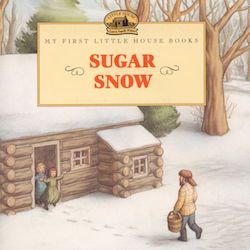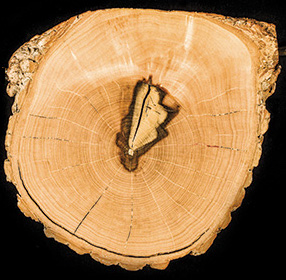From Sap to Syrup
Students recognize how geography and climate allow for the growth of maple trees and the process of making syrup, identify the characteristics of maple trees that produce the best sap for making maple syrup, and name the steps in the process of creating syrup from sap.

Background
Lesson Activities
Recommended Companion Resources
Credits
Author
Karen Cardinal | Minnesota Agriculture in the Classroom
Sources
- http://tapmytrees.com/faq/#1503631199543-510dfeb0-45c7
- https://www.nass.usda.gov/Statistics_by_State/New_York/Publications/Latest_Releases/2017/2017_Maple_Syrup.pdf
- https://www.maplesyrupworld.com/pages/Maple-Syrup-History.html
- https://www.arborday.org/trees/treeguide/treedetail.cfm?itemID=870
- https://files.dnr.state.mn.us/destinations/state_parks/maplesyrup_how.pdf
- https://vermontmaple.org/how-maple-syrup-is-made
Standards
Texas Content Area Standards
-
ELA: K.110.2.b.1
Developing and sustaining foundational language skills: listening, speaking, discussion, and thinking - - oral language. The student develops oral language through listening, speaking, and discussion.
- ELA: K.110.2.b.1.B: restate and follow oral directions that involve a short, related sequence of actions
-
ELA: K.110.2.b.5
Comprehension skills: listening, speaking, reading, writing, and thinking using multiple texts. The student uses metacognitive skills to both develop and deepen comprehension of increasingly complex texts.
- ELA: K.110.2.b.5.H: synthesize information to create new understanding with adult assistance
-
ELA: K.110.2.b.6
Response skills: listening, speaking, reading, writing, and thinking using multiple texts. The student responds to an increasingly challenging variety of sources that are read, heard, or viewed.
- ELA: K.110.2.b.6.F: respond using newly acquired vocabulary as appropriate
-
ELA: 1.110.3.b.1
Developing and sustaining foundational language skills: listening, speaking, discussion, and thinking - - oral language. The student develops oral language through listening, speaking, and discussion.
- ELA: 1.110.3.b.1.B: follow, restate, and give oral instructions that involve a short, related sequence of actions
-
ELA: 1.110.3.b.6
Comprehension skills: listening, speaking, reading, writing, and thinking using multiple texts. The student uses metacognitive skills to both develop and deepen comprehension of increasingly complex texts.
- ELA: 1.110.3.b.6.H: synthesize information to create new understanding with adult assistance
-
ELA: 1.110.3.b.7
Response skills: listening, speaking, reading, writing, and thinking using multiple texts. The student responds to an increasingly challenging variety of sources that are read, heard, or viewed.
- ELA: 1.110.3.b.7.F: respond using newly acquired vocabulary as appropriate
-
ELA: 2.110.4.b.1
Developing and sustaining foundational language skills: listening, speaking, discussion, and thinking -- oral language. The student develops oral language through listening, speaking, and discussion.
- ELA: 2.110.4.b.1.B: follow, restate, and give oral instructions that involve a short, related sequence of actions
-
ELA: 2.110.4.b.6
Comprehension skills: listening, speaking, reading, writing, and thinking using multiple texts. The student uses metacognitive skills to both develop and deepen comprehension of increasingly complex texts.
- ELA: 2.110.4.b.6.H: synthesize information to create new understanding
-
ELA: 2.110.4.b.7
Response skills: listening, speaking, reading, writing, and thinking using multiple texts. The student responds to an increasingly challenging variety of sources that are read, heard, or viewed.
- ELA: 2.110.4.b.7.F: respond using newly acquired vocabulary as appropriate
-
Social Studies: 2.113.13.c.16
Social studies skills. The student communicates in written, oral, and visual forms. The student is expected to:
- Social Studies: 2.113.13.c.16.C: create and interpret timelines for events in the past and present
-
Social Studies: 1.113.12.c.17
Social studies skills. The student communicates in oral, visual, and written forms. The student is expected to:
- Social Studies: 1.113.12.c.17.A: use a simple timeline to distinguish among past, present, and future
-
Science: K.112.2.b.6
Matter and its properties. The student knows that objects have physical properties that determine how they are described and classified. The student is expected to identify and record observable physical properties of objects, including shape, color, texture, and material, and generate ways to classify objects.
- Science: K.112.2.b.6: Matter and its properties. The student knows that objects have physical properties that determine how they are described and classified. The student is expected to identify and record observable physical properties of objects, including shape, color, texture, and material, and generate ways to classify objects.
-
Science: 1.112.3.b.6
Matter and its properties. The student knows that objects have physical properties that determine how they are described and classified. The student is expected to:
- Science: 1.112.3.b.6.A: classify objects by observable physical properties, including shape, color, and texture, and attributes such as larger and smaller and heavier and lighter.
-
Science: 1.112.3.b.10
Earth and space. The student knows that the natural world includes earth materials that can be observed in systems and processes. The student is expected to:
- Science: 1.112.3.b.10.A: investigate and document the properties of particle size, shape, texture, and color and the components of different types of soils such as topsoil, clay, and sand.
-
Science: 2.112.4.b.6
Matter and its properties. The student knows that matter has physical properties that determine how it is described, classified, and used. The student is expected to:
- Science: 2.112.4.b.6.A: classify matter by observable physical properties, including texture, flexibility, and relative temperature, and identify whether a material is a solid or liquid

